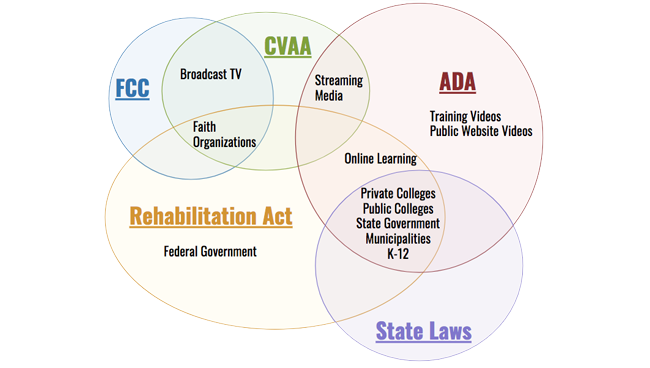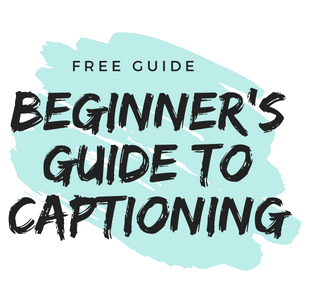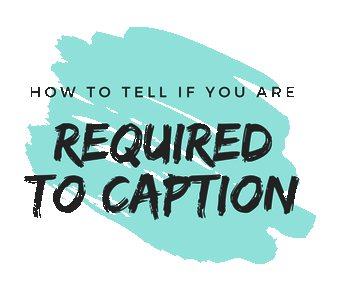Trends in Video Accessibility
Updated: July 3, 2024
More video is uploaded to the web in 1 month than TV has created in 3 decades.
Every day more than 500 million hours of video is watched on YouTube alone.
People are watching video on social media; they are watching video on streaming websites.
People are watching video on their phones, on their tablets, on their computers.
This increase in video production and consumption isn’t slowing down anytime soon.
By 2019, 80% of the world’s internet traffic will be video.
Getting people’s attention
Video is an incredibly powerful tool to engage viewers.
But the challenge today for content creators is finding a way to engage viewers and stand out among the clutter of content.
Humans have an average attention span of 8 seconds – which is actually shorter than the attention span of a goldfish (9 seconds).
When people are scrolling on their phones, you need to have a mechanism for making them stop.
Say hello to captions.
Captions have been proven to improve brand recall, verbal memory, and behavioral intent.
A research study by the University of Iowa uncovered that people recall information better after seeing and hearing it. Captions help engage your audience, directing their eyes to your videos and reinforcing the message of the video.
Autoplay Mute
If your video relies heavily on sound, your beautiful video will be meaningless without sound.
Facebook uncovered that 80% of viewers react negatively to videos autoplaying with the sound on. So they decided to autoplay videos on mute.
See, video and technology go hand-in-hand. The rise in smartphones has allowed people to consume content on the go. People are watching videos in noisy places, at work, at the gym – basically everywhere.
This means that when someone doesn’t have their headphones, he or she’ll easily scroll past your video if it isn’t captioned.
You may have noticed many media organizations are encoding captions onto their videos; they are letting the captions do the talking.
Captioning makes your videos accessible
71% of people with disabilities leave a website immediately if it is not accessible.
Captions were created as an accommodation for the deaf and hard of hearing. When your videos aren’t captioned, you are alienating a large portion of the population.
You never know who is watching your videos. As a result, it’s best practice to always make your videos accessible for everyone.
Legal increase in captioning
If you work in broadcast television, you are probably familiar with the FCC and CVAA and their requirements to caption televised content.
In other industries though, many people aren’t aware that they are also required to caption. In fact, in the 2018 State of Captioning report, we uncovered that 68% of people know what accessibility laws apply to them, but most of these people aren’t the decision makers for captioning.
When it comes to legal laws, many people fear them, get confused, or simply don’t care. But instead of waiting for a lawsuit to hit you out of nowhere, it’s better to know what laws apply to you, and what you need to do to comply with them.
In the webinar, Navigating the Venn Diagram of Video Accessibility Laws, we broke down each law by industry. You can also read the blog, How to Tell If You Are Required to Caption Your Videos.

As video continues to dominate online, laws are beginning to implement more and more requirements for captioning. For example, Section 508 of the Rehabilitation Act was refreshed at the beginning of 2018 to require WCAG 2.0 Level AA compliance. Captioning – and audio describing – online videos is a requirement under WCAG.
Rise in lawsuits
Over the last couple of years, prominent online video distributors like Netflix, Amazon, and Hulu have been sued for lack of captioning.
In these lawsuits, the Americans with Disabilities Act (ADA) was applied to online-only organizations for the first time ever.
In general, ADA website lawsuits have been on the rise. In 2017, there were 814 federal lawsuits against inaccessible websites.
Lawsuits are being brought to organizations across industries. As our world continues to become more digitized, it’s important to keep accessibility at the frontier of all online operations.
Video Accessibility Laws
In order to prevent a lawsuit from sneaking up on your organization, it’s important to be familiarized with the laws, and what you need to do to comply with them.
There are five major video accessibility laws in the United States. Each law pertains to a certain industry.
- The Rehabilitation Act: Federal government, online learning, private colleges, public colleges, state governments, municipalities, faith organizations, and K-12 schools
- The Americans with Disabilities Act (ADA): Training videos, public website videos, streaming media, online learning, private colleges, public colleges, state governments, municipalities, K-12 schools
- The 21st Century Communications and Video Accessibility Act (CVAA): Broadcast television, streaming media, faith organizations
- The Federal Communications Commission (FCC): Broadcast television, faith organizations
- State laws: Private colleges, public colleges, state government, municipalities, K-12 schools
Video accessibility benefits everyone
People like having captions. Captions are no longer just an accommodation for the deaf and hard of hearing.
When you invest in video accessibility, you see a greater return on your investment.
The electric toothbrush was originally created for individuals with motor impairment. Today, it’s an accommodation everyone benefits from. Your goal should be to make accessible content as standard as the electric toothbrush.








